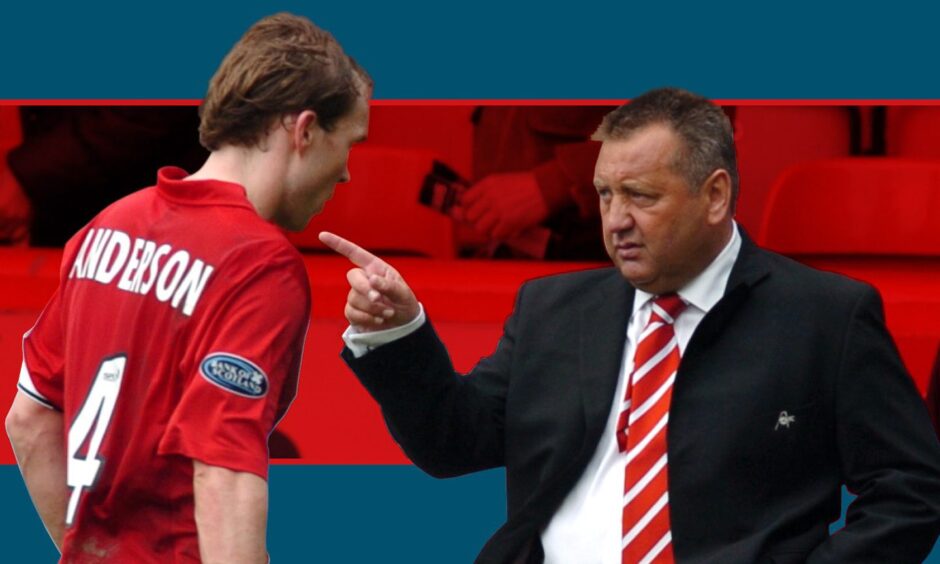
Jimmy Calderwood was the right man in the right place at the right time at Aberdeen.
That’s the view of former Dons captain Russell Anderson, who believes his former manager’s enthusiasm was the catalyst for the club’s rise out of the doldrums.
The period prior to Calderwood’s appointment was a challenging one for Aberdeen.
Nine wins from 38 league games meant the Dons finished second bottom of the Scottish Premier League.
It was time for change.
The 2003-04 season had just ended when Gothenburg Great Willie Miller’s return to the club was confirmed – when he was named director of football by chairman Stewart Milne.
The first order of business was to inform manager Steve Paterson and his backroom staff their services were no longer required.
Within days, on May 28, 2004, the new era was under way with Calderwood and his assistant Jimmy Nicholl lured to Pittodrie from Dunfermline.
It’s fair to say the new manager wasted little time in getting a floundering Aberdeen team going again.
‘Jimmy breathed new life into the club’ – Russell Anderson
The Dons rose from second bottom to European contenders in the space of a season, but missed out on Europe after finishing fourth behind Hibernian on goal difference.
Anderson believes the credit for the club’s revival in 2004-05 was led by the sheer force of will which Calderwood possessed.
For Anderson, who was Calderwood’s captain for three years before moving to Sunderland in the summer of 2007, his former boss had a transformative effect following his arrival at Pittodrie.
Anderson said: “Jimmy was a larger than life person who breathed new life into the club when he came in.
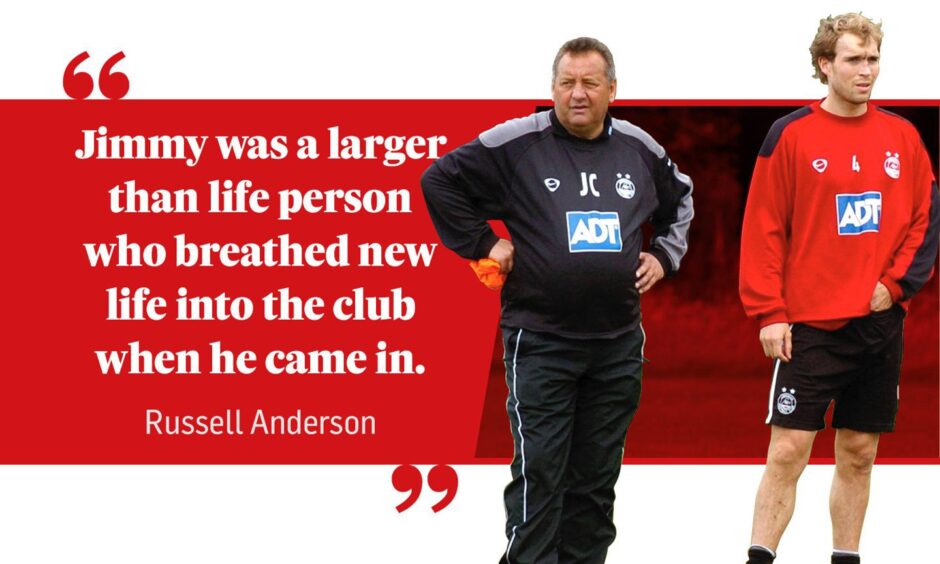
“He was so positive in his outlook and it rubbed off on the players pretty quickly – look at how quickly things started to turn around off the back of the previous season where we finished 11th.
“I’m not sure what the supporters were expecting when he arrived, but everyone saw pretty quickly how enthusiastic he was and it rubbed off on everyone.
“He made good signings as soon as he came in, which I think helped.
“He added quality to the spine of the team with Scott Severin, which was a real statement of intent.
“Getting him here was a real coup and gave everyone a lift – thinking back to that time the place needed it.”
New Dons boss immediately put his mark on the team
Calderwood arrived at Pittodrie with a reputation for his swashbuckling style of football.
It was a deserved accolade, too, as he thought nothing of switching to a 2-4-4 attacking formation if the situation called for it.
His teams were as bold and brash on the pitch as he was off it.
Anderson said: “The manager’s character came across in terms of how he wanted us to play.
“He had made a name for himself at Dunfermline based on playing attacking football on the front foot and being brave.
“I think the supporters took to that pretty early on.
“Having Jimmy Nicholl as well was important as the two of them worked really well together.
“Jimmy Nic was a great player in his day and had great experience he would draw on.”
Lessons learned from a frustrating second season
Calderwood guided the Dons to sixth, two points behind fourth-placed Hibs again the following season as his side missed out on Europe again.
Despite the disappointment, Anderson believes lessons were learned ahead of the 2006-07 campaign as Aberdeen beat Rangers on the final day of the campaign to secure a third-place finish and with it qualification for the Uefa Cup.
The former Dons captain, who retired in 2015, said: “In the three seasons I played, we finished the second one strongly, but we actually gave ourselves too much to do given how poorly we started it.
“It was a real disappointment off the back of his first season as everyone expected us to kick on from finishing fourth in the first season.
“We were always playing catch-up as a result.
“In the third season, it all came together and to beat Rangers on the final day to qualify for Europe at the end of that season was a good afternoon.
“I certainly remember that one quite well, but it was not a surprise.
“There was a consistency there which we hadn’t had for quite a while.”
‘I played some of my best football under Jimmy’
For Anderson, who was keen to test himself in the Premier League in England, the time had come to bow out from Pittodrie as he moved in the summer of 2007 to Roy Keane’s Sunderland in a £1million transfer.
He would return to lead the Dons to League Cup glory in 2014 before hanging up his boot, but the defender remains grateful to Calderwood for giving him some of the most enjoyable years of his career.
He said: “A lot has been said about the reasons I had to leave and it wasn’t because I wasn’t enjoying my football.
“My three years under Jimmy and my second period back when we won the League Cup were the two periods of my career which I enjoyed the most.
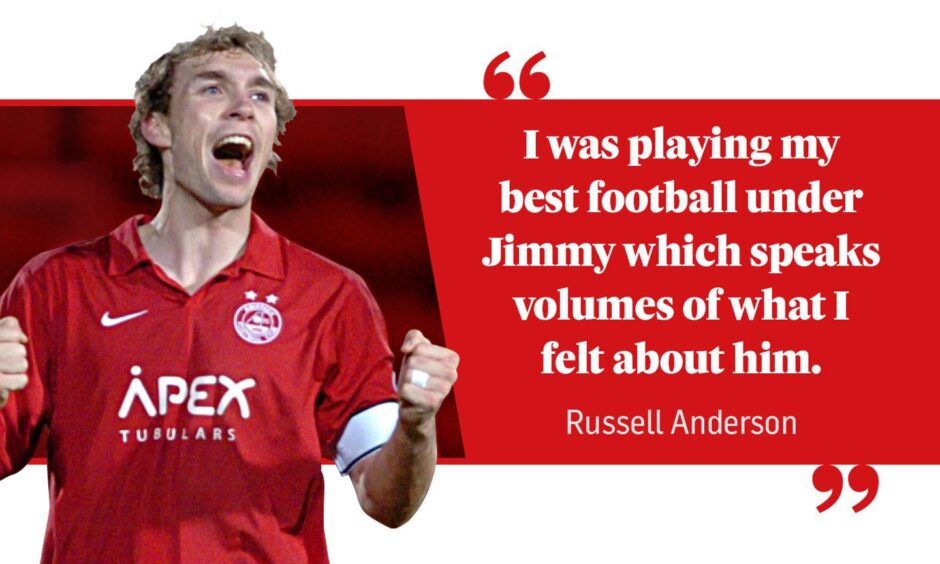
“I was playing my best football under Jimmy which speaks volumes of what I felt about him.”
Former players wanted to play for Calderwood again
One feature which stands out from Calderwood’s managerial career in Scotland is the number of players who jumped at the chance to work with him again.
Pittodrie was no different with Richie Byrne, Gary Dempsey, Barry Nicholson, Stevie Crawford, Craig Brewster and Derek Young, who all played for Calderwood while he was Pars boss, accepting the chance to link-up with him at the Dons during his five seasons in charge.
Anderson said: “Guys who worked with him were all eager to play for him again. That’s the best compliment you can give him – they enjoyed playing for him.
“His training was good. It was hard, but enjoyable.
“He never sugar-coated things either. He demanded high standards and that was a good thing.
“I really enjoyed playing under him and felt before I left it was the time I was part of a really good team and playing well personally.”
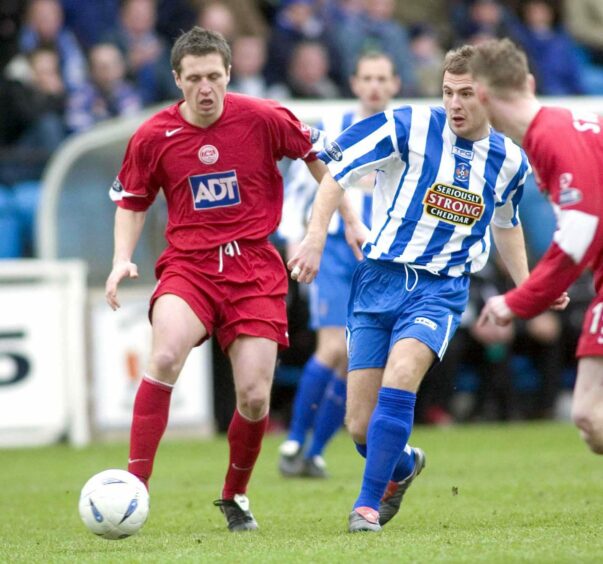
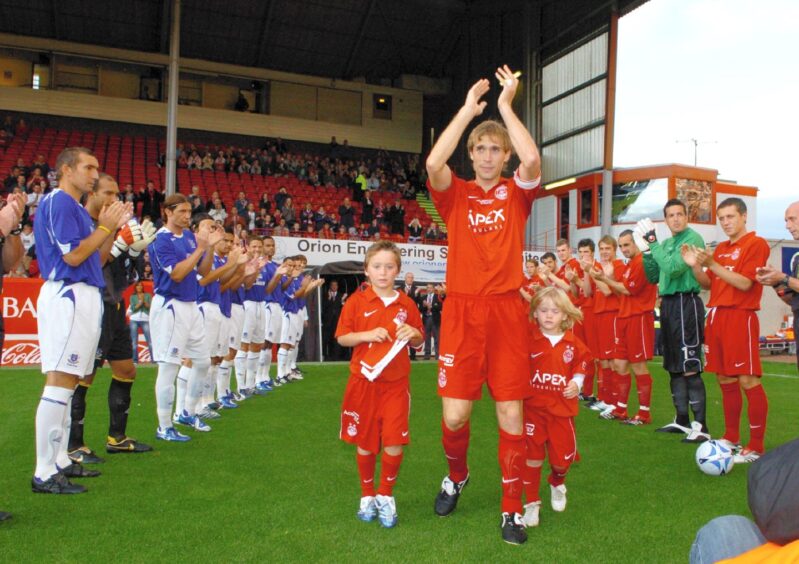
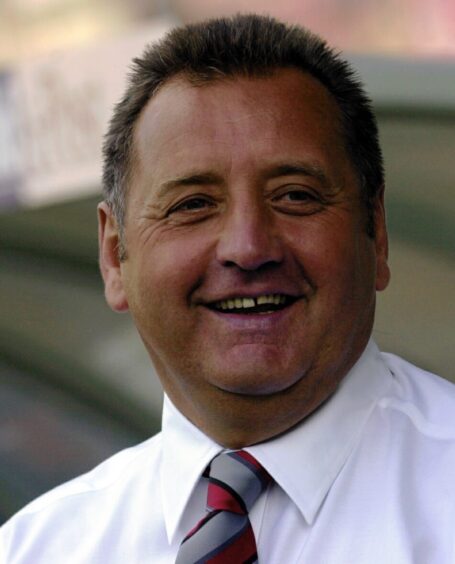
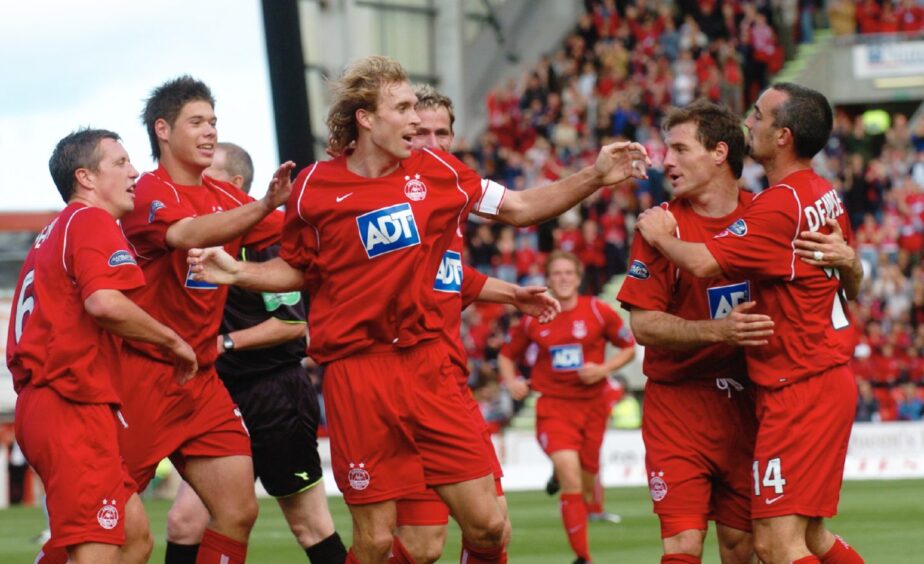
Conversation